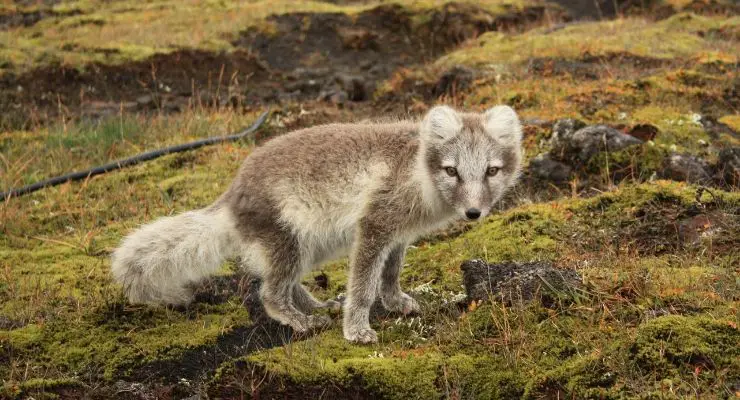Animals
Scientists Were Left ‘Speechless’ After an Arctic Fox Walked 2,176 Miles in Just 76 Days
A young arctic fox has made a spectacular journey of 2,176 miles from Norway to Canada in a mere 76 days.

(TMU) — A young arctic fox has made a spectacular journey of 2,176 miles from Norway to Canada in a mere 76 days, leaving researchers at the Norwegian Polar Institute speechless.
Scientists had fitted the 1-year-old coastal or blue fox with a GPS tracking device in July 2017, according to the Guardian, before freeing her into the wild. The fox left the east coast of Spitsbergen, the main island of Norway, on March 26 of last year.
After a 1,000-mile, 21-day trek across the frozen sea ice, she landed in Greenland on April 16, 2018. She then walked approximately 1,242 miles out to Ellesmere Island in Canada, where she arrived on July 1st.
https://giphy.com/gifs/Q67UV1IkG36cGlz1dd
Eva Fuglei, a researcher who tracks how foxes deal with the dramatic changes in Arctic seasons, was stunned by the unprecedented speed and distance of the young fox’s journey. On some days, the female fox managed to travel over 96 miles.
The Norwegian Polar Institute said in their research paper, One female’s long run across sea ice, that they had initially wondered if the fox’s collar was removed and taken on board a boat—a scenario they eventually realized was unfeasible because of the inability of boats to travel so far into the ice.
“This is, to our knowledge, the fastest movement rate ever recorded for this species,” Fuglei remarked in the paper.
Fuglei told Norwegian public broadcaster NRK:
“We couldn’t believe our eyes at first.
We thought perhaps it was dead, or had been carried there on a boat, but there were no boats in the area. We were quite thunderstruck.”
Continuing, she explained:
“There’s enough food in the summer, but it gets difficult in winter.
This is when the Arctic fox often migrates to other geographical areas to find food to survive. But this fox went much further than most others we’ve tracked before – it just shows the exceptional capacity of this little creature.”
And while the fox may well have traveled even further, her transmitter stopped working in Canada this past February.
Food sources are rather scarce on Ellesmere Island where the fox’s diet likely consisted of small rodents such as lemmings rather than the marine diet she enjoyed in Svalbard, Fuglei said.
Arctic foxes are capable of surviving extremely cold temperatures as as low as -58 degrees Fahrenheit. Their short muzzle, short ears, and fur-soled paws give them an incredible ability to survive cold climates.
During the winter, the fox largely consists on the leftovers, such as reindeer carcasses, of larger predators like polar bears.
Researchers believe that the fox’s journey shows the crucial role that sea ice plays for the migration of species between the continents and ecosystems in the arctic.
The journey also shows how climate change could drastically limit the migratory options available to animals in the region.
Norway’s climate and environment minister, Ola Elvestuen, told the Institute:
“This is another example of how important sea ice is to wildlife in the Arctic.
The warming in the north is frighteningly fast. We must cut emissions quickly to prevent the sea ice from disappearing all summer.”
By Elias Marat | Creative Commons | TheMindUnleashed.com
Typos, corrections and/or news tips? Email us at Contact@TheMindUnleashed.com
